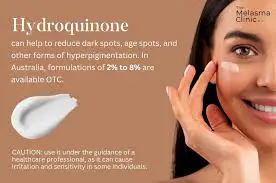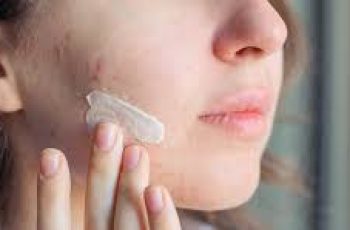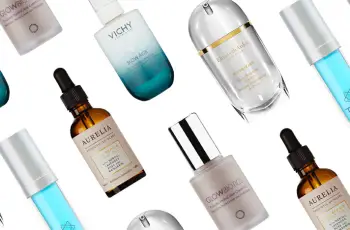
Guide to Find the Best Products for Melasma and Hyperpigmentation
Melasma is a challenging skin condition characterized by dark, irregular patches of hyperpigmentation, usually on the face.
It is caused by an overproduction of melanin triggered by factors like sun exposure, hormonal changes, and inflammation.
Treating melasma and other forms of hyperpigmentation requires a well-thought-out skincare routine tailored to your specific skin type and needs.
This guide will walk you through how to choose effective products and build a regimen that works.
Understanding Melasma and Hyperpigmentation
Melasma vs. Other Hyperpigmentation
While melasma is a form of hyperpigmentation, it differs from other types like postinflammatory hyperpigmentation (PIH) due to its stubbornness and deeper pigmentation.
Melasma often appears symmetrically on the cheeks, forehead, upper lip, and chin and is notoriously difficult to treat.
Hyperpigmentation occurs when melanin, the pigment responsible for skin color, is overproduced or unevenly distributed. This can result from sun damage, hormonal shifts, injury, or inflammation.
Why You Need Customized Skincare for Melasma
Everyone’s skin barrier and type are unique, and so are the triggers and barriers to treating melasma.
The Baumann Skin Type® system helps identify your exact skin type—dry or oily, sensitive or resistant, pigmented or non-pigmented—so you can customize your routine.
Key Point: Your routine should target not only pigmentation but also underlying causes such as inflammation and barrier dysfunction.
Alternating Skincare Routines: Treatment and Maintenance
Melasma treatments often lose effectiveness over time because your skin adapts to active ingredients, especially tyrosinase inhibitors, which block melanin production. To prevent this:
Treatment Regimen: Intensive active ingredients for 3-4 months to reduce pigmentation.
Maintenance Regimen: Less intensive ingredients to maintain results and reduce relapse risk.
Switching between these routines ensures your skin continues to respond positively and minimizes side effects.
Essential Ingredients for Melasma Treatment
Tyrosinase Inhibitors (Strongest Lightening Agents)
These ingredients block the enzyme tyrosinase, crucial for melanin production. They are the cornerstone of melasma treatment.
Common Tyrosinase Inhibitors:
Hydroquinone (though many prefer hydroquinone-free options), Niacinamide (Vitamin B3), Kojic acid, Arbutin, Azelaic acid, Tranexamic acid
Vitamin C is also a tyrosinase inhibitor but often less potent for melasma treatment alone.
Exfoliants (AHAs and BHAs)
Alpha Hydroxy Acids (AHAs) like glycolic acid and lactic acid exfoliate the surface skin, removing pigmented cells and revealing fresher skin.
Beta Hydroxy Acids (BHAs) like salicylic acid penetrate oily pores and reduce inflammation, suitable for oily or acne-prone skin.
Retinoids
Retinoids accelerate skin cell turnover, promote collagen production, and fade pigmentation. Start with low concentrations and gradually increase to avoid irritation.
Sunscreen
Sun exposure worsens melasma. Use tinted sunscreens with iron oxide to block visible light and blue light from screens, which can trigger pigmentation.
How to Choose Melasma Products for Your Skin Type
Your routine needs to be tailored to your Baumann Skin Type® to avoid irritation and maximize results.
Dry Skin: Choose hydrating, gentle formulations with AHAs and moisturizing tyrosinase inhibitors.
Oily/Acne-Prone Skin: Use oil-control and anti-inflammatory BHAs with lighter serums.
Sensitive Skin: Opt for gentle ingredients, avoiding harsh mechanical exfoliants or strong retinoids initially.
Combination Skin: Balance between dry and oily product types.
Recommended Melasma Treatment Products
For Dry Skin
PCA Skin Vitamin B3 Brightening Serum – Hydrating, niacinamide-rich to brighten.
Revision Skincare C+ Correcting Complex 30% – Potent vitamin C with antioxidants.
Neocutis PERLE Skin Brightening Cream – Creamy, nourishing formula with skin lighteners.
Obagi Nu-Derm Blend Fx (Hydroquinone-Free) – Gentle but effective pigment corrector.
For Oily Skin
Obagi Nu-Derm FX Starter System (Normal to Oily) – Comprehensive, professional-grade kit.
PCA Skin Pigment Gel PRO – Lightweight, hydroquinone-free formula.
Biopelle Brightening KNR Serum – Oil-free and brightening.
La Roche-Posay Glycolic B5 Serum – Combines AHA exfoliation with hydration.
Exfoliation: The Key Step
Use exfoliating cleansers containing AHAs or BHAs to help remove pigmented cells and improve serum penetration.
Dry Skin: Use AHA-based cleansers (glycolic or lactic acid).
Oily Skin: Use BHA (salicylic acid) cleansers to clear pores and reduce inflammation.
Examples:
Revision Skincare Brightening Facial Wash – AHA cleanser for dry skin.
Replenix Gly-Sal 5-2 Deep Pore Cleanser – BHA cleanser for oily skin.
La Roche-Posay Effaclar Medicated Acne Wash – BHA cleanser with soothing properties.
Avoid mechanical scrubs that can cause inflammation and worsen pigmentation.
Serums: Potent Pigment Correctors
Serums concentrate active ingredients for maximum effect. Use tyrosinase inhibitor serums during treatment phases.
Vitamin C serums are better suited for maintenance phases or combined with stronger inhibitors.
Recommended Vitamin C serums:
La Roche-Posay Vitamin C Serum
Obagi-C FX System C-Clarifying Serum
ISDIN Flavo-C
Retinoids: Nighttime Pigmentation Fighters
Retinoids promote skin cell turnover and collagen remodeling.
Start low and slow to prevent irritation:
Replenix Retinol 2X Regenerate Dry Serum
Revision Skincare D.E.J. Night Face Cream
La Roche-Posay Redermic R Anti-Aging Treatment
Increase strength gradually and avoid retinoids during the day.
Sunscreen: The Non-Negotiable Step
Consistent daily use of broad-spectrum sunscreen is crucial.
Tinted sunscreens with iron oxide protect against visible and blue light, which exacerbate melasma.
For dry skin:
EltaMD UV Daily Tinted Broad-Spectrum SPF 40
Revision Skincare Intellishade Matte SPF 45
For oily or acne-prone skin:
SkinCeuticals Physical Fusion UV Defense SPF 50
Alastin HydraTint Pro Mineral Broad Spectrum SPF 36
Reapply every two hours and after sweating or swimming.
Building Your Routine: Step-by-Step
Morning Routine (Maintenance Phase)
Gentle Cleanser (AHA/BHA based depending on skin type)
Tyrosinase Inhibitor Serum (lighter for maintenance)
Moisturizer (hydrating or mattifying based on skin type)
Tinted Sunscreen
Night Routine (Treatment Phase)
Exfoliating Cleanser
Tyrosinase Inhibitor Serum (stronger formula)
Retinoid (start low concentration)
Moisturizer
Additional Tips for Success
Patch test new products to avoid irritation.
Avoid harsh scrubbing and excessive sun exposure.
Use antioxidants to reduce inflammation.
Be patient: Melasma can take months to improve.
Consult a dermatologist for prescription options if needed.
Summary
Treating melasma effectively means combining:
Targeted tyrosinase inhibitors
Gentle exfoliation with AHAs/BHAs
Retinoids to accelerate cell turnover
Consistent use of tinted broad-spectrum sunscreens
Customized routine according to your skin type and tolerance
By alternating between treatment and maintenance routines, and addressing underlying inflammation and barrier issues, you give your skin the best chance to fade melasma and prevent recurrence.


